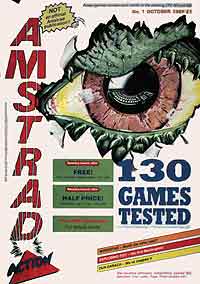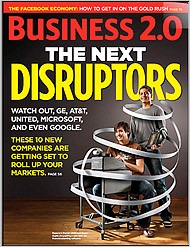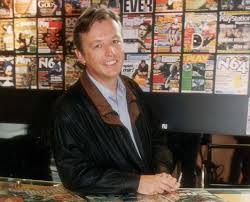Hero
Chris Anderson: He is the former magazine publisher, journalist and internet entrepreneur who is the ‘curator’ of TED, responsible for the eponymous conference which began 31 years ago in Monterey and has been a world-watching annual event since 1990.

Together with TEDGlobal, the two conferences attract some 1,200 attendees from 40 countries. For the main North American West Coast conference, over 70 speakers appear on the main stage to give 18-minute talks and shorter presentations, including music, performance and comedy. But there’s so much more to Anderson’s transformation of TED over the past 14 years. There’s: the $1m TED Prize, which grants its winners one wish to change the world; TED digital books; the TED radio hour; and thousands of independent TEDx events in more than 150 countries.
But, for tens of millions of people all over the world, TED is a brilliant podcast series of the best talks. It has been free online since 2006. The 2,000 talks are translated into more than 100 languages and have been viewed nearly two billion times. What was once a conference for a few hundred people is now a global multimedia colossus with $45m in revenues and a level of influence that is the envy of governmental, research and academic organisations everywhere.
Although TED is an acronym for ‘Technology, Entertainment and Design’, its mission is no less than to make the world a smarter and better place: it’s a platform for “ideas worth spreading” and today spans everything from science to business to the arts and global issues. And there’s not a sponsor’s logo in sight.
Anderson chooses the speakers, hosts the conferences, and decides which talks go online: “There are numerous brilliant people out there and they’ve come up with something really important, so part of the way we see our role is to help them make their knowledge accessible.” An amazing, diverse cast of TED speakers have included: Bill Gates, Bono, Jamie Oliver, Richard Dawkins, Niall Ferguson, Bill Clinton, Isobel Allende, Al Gore, Sting, Steve Jobs, Mark Zuckerberg, Monica Lewinsky, Felix Dennis, Michelle Obama, Malcolm Gladwell, Richard Branson, Stephen Hawking, Jeff Bezos, Desmond Tutu, Larry Page, and Julian Assange.
They have each given the “talk of their lives” to a paying TED audience, some more than once. But there are also

hundreds more speakers who are not well-known, many of whom have achieved literally tens of millions of views talking about everything from how to build a nuclear reactor to stopping cyber-bullies. Some, like little-known UK educationalist Ken Robinson, have become world best-selling authors and speakers. His “Schools Kill Creativity” has become the most watched TED talk of all time. His three talks have notched up at least 25m views.
Anderson says: “It is a campfire. Someone stands up and everyone’s eyes are on them, they tell a story. At the heart of this phenomenon is a belief that knowledge can and should be shared. TED-like talks are only one of many ways in which this should happen. But they have a role to play, and we see it as an encouraging sign that millions of people around the world have enough hunger for learning to want to spend time watching them.”
The TED online database is funded by conference delegates and donors paying anything from $4,250 up to $30,000 per year. But there is also low-cost access to live conference streaming, to individual talks as they are delivered, and also to the whole conference after it has taken place.
The whole non-profit enterprise is a formidable achievement for the self-effacing Brit who has been described by the New York Times as “high-minded but sometimes inaccessible, forward thinking to the point of ‘whoa’, and so earnest it can be easy to smirk.” But, although TED is clearly Anderson’s life’s work, it is actually his third career.
Born in a remote village in Pakistan, his early years were spent in India, Pakistan and Afghanistan where his father worked as a missionary eye surgeon. He spent much of his childhood “reading, observing and lying out, looking at the stars and thinking about ideas”.
Anderson attended boarding school in in the city of Bath in England’s south west. He graduated in philosophy from Oxford University, before turning to journalism where he became passionate about the emerging 1980s craze for computer games and technology. Within a few years, he had launched a first magazine Amstrad Action from his kitchen table. By 1985, he had founded Future Publishing with a £15,000 bank loan. For the next seven years, the fledgling British company doubled its turnover, profit and number of employees every single year.

The publisher graduated from his kitchen to a converted country barn and then to a string of converted houses dotted round Bath city centre. These were boom times for magazines and for computer games. And Anderson neatly made his magazines interactive in pre-internet days with cover-mounted CDs and disks to help readers develop their skills, try-out computer games and play music they had read about. Future described itself as a publisher for “readers with a passion” and his journalists shared the passion.
In 1993, less than 10 years after Future’s launch, media group Pearson bought the company for £52.5m, as part of its ultimately disastrous billion dollar splash into the world of computer games. Anderson banked the cheque and moved to San Francisco – to take on the US magazine market.
A few years on, Pearson lost its passion for Future and sold it to private equity firm APAX – and Chris Anderson again became chairman. The US and UK companies were brought together and floated excitedly on the London Stock Exchange in June 1999, just as media stocks were limbering up for the first dotcom boom. The IPO valued the company at £199m and early trading boosted it by 25%. But that was just the start.
The quietly-spoken Anderson was an unlikely media tycoon but demonstrated a sure touch by launching Business 2.0, a magazine for the ‘new economy’ whose title had been suggested by Jeff Bezos at the 1999 TED conference. It became – briefly – one of the fastest growing magazines in the US, notching up 2,000 pages of advertising in its first year. Future Network Plc was on fire and was worth £1bn within 12 months of IPO. Subsidiaries were opened in France, Germany, Poland, and Italy as they prepared for the Business 2.0 conquest of Europe.
Stockmarket analysts were momentarily euphoric about Future, which peaked at more than 100 tech-driven magazines in six countries selling 5m copies every month, with some 2,000 employees. Turnover hit £250m as the Playstation generation made Chris Anderson and his company rich. But it was all too good to be true. At the height of the boom, his private equity partner escaped with its ramped-up winnings – and left him to face the bust.

No sooner had investors recovered from the humiliation of the ‘millennium bug’ (remember that?), than they turned on the ‘millennium’ companies they had also once worshipped. Future was really a fairly traditional magazine publisher, albeit an especially ambitious one led by an internet visionary. But its in-built volatility stemmed from a dependence on high-priced newsstand sales and the success of new computer games, the cover-mounted demo discs for which justified high magazine prices. Mere delays in the introduction of new consoles and bestselling games played havoc with Future’s magazine profits. And the burst dotcom bubble piled on the agony.
Along, with hundreds of ‘new economy’ businesses, the company suddenly faced demands for short-term profits instead of promised long-term growth. The share price collapsed, along with magazine sales, investor confidence, and revenues. Only debt was rising. The market valuation, which had scaled the heights of £1bn, now struggled to reach £25m.
Anderson was shattered by the collapse. His 24% shareholding, which had briefly been worth £300m, fell to £6m. But there was worse. Future was forced to scale-back both its magazines and its workforce by 40%, in order merely to survive. It was a bloody 2001 as the founder rued the day he had befriended private equity and the stock market. The company with a reputation for launching new magazines by young enthusiasts for young enthusiasts, was forced to spend a year making them redundant. But it survived.
The stumbling company was effectively rescued by AOL Time Warner. Smarting from having missed out on the $350m sale of Fast Company magazine, the US media conglomerate paid Future a life-saving $68m for the suddenly-lossmaking US edition of Business 2.0. Although the Fast Company sale to Gruner & Jahr had been completed at a dizzy price only the year before, the Business 2.0 deal was a triumph because it would not have been possible at all just a few months later. It was, literally, just in time for Future – and for the shooting star of a magazine which, in the event, didn’t survive long at AOL Time Warner.
Anderson left Future in 2001, armed with the Imagine Games Network (later sold to News Corp), and the TED conference which the departing chairman’s Board colleagues were smirkingly relieved to offload to him for £4m – less than half of what they had recently paid for it. The Guardian (today, one of TED’s cheerleaders) sniffily described it then as “one of the weirder new economy events…Each year an extraordinary mixture of ‘experts’ meet in Monterey, California to discuss subjects including ‘the design of the chair’, ‘the design of sensuality’ and ‘the design of the near future’.

The Future founder flew back to San Francisco just as the revolutionary iPod was being launched. He had come to believe that the best days of magazines were over and that the internet would completely transform media and entertainment. It would be a full five years before most magazine people could quite see that.
Next month (June), Anderson will return to Bath to join 30th anniversary celebrations for his former company, which was once the city’s largest private employer.
Future Plc continues to be a much-loved (almost heroic) company with enthusiastic expertise across guitars, gadgets and games. Even long-suffering investors (sort of) seem to forgive a sub-scale public company which has suffered periodic crises punctuated by recurring US losses and the revolving door to four CEOs in 10 years. But the reminder of a troublesome 14 years is a share price which is less than half what it was in 2001 and 12% of its 2005 peak.
The company still publishes sparky, passionate magazines, and clever digital services. It is still high on innovation and as tech-savvy as magazine-centric groups come. But circulation and advertising revenues are under constant pressure. And then there is the tormenting little question for our times: how can magazine-media adequately monetise even quite large digital audiences? Even with impressive scores like 52m monthly uniques for PC Gamer, the future for Future is still most likely to be in undemanding private ownership (like its UK peers Dennis and Haymarket). Or as content marketing media for a database, financial services or retail company. Its stock market listing could also provide an attractive merger exit for private equity-owned Immediate Media, whose special interest media (some bought from Future) would fit well.
But, for one night only, the corporate challenges will be drowned out by nostalgia.
The surprisingly introverted founder will be surrounded by former colleagues remembering the nerdy young games enthusiast who made and lost hundreds of millions in those heady days when magazines were hot – and tech magazines were hotter still.
Future’s birthday party will be awash with stories of magical magazines, journalistic jewels, glorious gadgets, and soaring shares. And, for a few hours of summer wine, it will be easy to forget that Chris Anderson is now one of the world’s most influential people. Local hero becomes global hero.
Context:
Is this quiet Brit the most influential person on earth?
Can new Future boss bring stability?
Villain
Mort Zuckerman: We are again stretching the definition of “villain” to include an entrepreneur who has made billions from property development on the US east coast and, in 2000, a cool $350m from Fast Company magazine. The success persuaded him that media

(Source: Crains New York)
was easy – and valuable. The result was a modest return on Atlantic Monthly (sold to David Bradley for $10m in 1999), a disappointing performance with US News & World Report, and what is becoming a financial disaster on the New York Daily News.
The Daily News, which was launched in 1919, is America’s oldest tabloid and was “rescued” by the subsiding Robert Maxwell shortly before his death in 1991. The Montreal-born Zuckerman paid $36m to buy the paper out of bankruptcy in 1993. But he has simply not been a match for the tabloid flair and aggression of Rupert Murdoch, owner of the rival New York Post.
Talks with Murdoch’s News Corp about consolidating some of the Post‘s and Daily News‘ operations to save money have consistently failed. The most recent circulation figures are 427,452 on weekdays and 558,057 on Sundays. The Post—also a perennial loss-maker —had a weekday circulation of 497,878 and 454,007 on Sunday for the same period. The News has seen major online growth, reaching up to 40m monthly uniques but we all know how much profit there will be in that. And daily single-copy sales declined by more than 40% during 2011-14. Annual losses are now running at an estimated $30m, so the US’s primary media market looks set to be left with just one tabloid newspaper some time soon.
After on-off merger talks with News Corp, Zuckerman has put the Daily News up for sale. But last week’s signal of a struggling sale process was the decision by bidding favourite Cablevision (owner of the newspaper Newsday) to drop its earlier $1 bid – which speaks volumes about the costs of (sort of) merging the two dailies.
Such distress is a familiar enough part of current newspaper business, of course. But this is personal. Time magazine quotes an unnamed business associate of Zuckerman: “He’s very bright and very insecure, and has an overwhelming need for acceptance within a certain circle of society. If you don’t have good enough ideas or a nice enough style to write for The New Republic or The Atlantic professionally, just buy the damn papers and they have to print your garbage.” And, so many people, that’s what he has always seemed to be doing.
The Daily News owner (who has long harboured political ambitions) has seldom managed to keep his own views out of print and, to some extent, his once celebrated tabloid is paying the price. Most still expect some kind of merger with the New York Post – either directly from the faltering sale process or at the next stage. In many ways, the Daily News is a symbol of the seismic change in newspapers because the draining circulations and advertising have not just brought never-ending losses. They have also reduced the prestige and power that attracted powerful business figures to newspapers in the first place.
Perhaps this is reflected in the way that Australia’s richest person, mining empress Gina Rinehart, has backed off from wanting to control the country’s Fairfax newspapers ( which are also competing head-on with loss making Murdoch competitors), four years after becoming a major shareholder. Rinehart says she has had enough of watching the Fairfax management ruining the business, but you can bet she has realised (belatedly) that newspapers are – to say the very least – just not what they were. It might also explain the dearth of unsolicited offers for the UK national daily newspapers that could be expected to be for sale: the Daily Express, The Independent, and (even) the Daily Mirror. In that sense, Mort Zuckerman’s “crime” is just owning up.
Context:
How 8 Journalists are revolutionising the news




